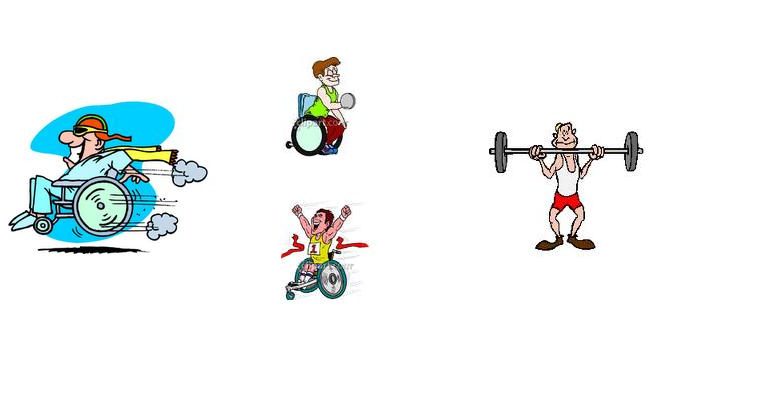
Disability and exercise: top tips for getting fit in 2015
It may be nearing the end of January, but that doesn’t mean it’s time to stop your New Year’s resolution to get fit. If anything, now is the time to embed it into your routine so that it remains a goal for the year. Here we talk to Emma Crees, who uses a wheelchair, about how she won’t let her disability stop her from getting fit in 2015 and how you shouldn’t either.
Despite being a wheelchair user, I used to be relatively fit. Over the last several years however, I’ve really let that go. I hate that, so one of my goals for 2015 is to be a bit fitter.
This goal is not one relating to mobility – I use a wheelchair all the time and that’s not something I could change, even if I wanted to. And whilst it’s true that I could really do with losing weight, that’s more of a secondary reason for this. The key reason is that I just want to be fitter, mostly because I miss the activities I did that helped keep me that way.
Some people find it hard to understand how fitness and mobility can be different things, and I’ve had comments from others along the lines of “but you use a wheelchair, of course you can’t exercise.” And if I’m honest, it’s hard to keep motivated when everyone is shoving excuses like that at you. But I know when I get started I’ll enjoy it again. The getting started is the tough bit, but maybe by writing this piece for Disability Horizons, I’ll find that motivation.
Group exercise is probably the best way to get motivated, particularly if you can get a friend or family member to go with you. I take part in a Sailability group every week for six months of the year. It’s a lot of fun and as I don’t sit in my wheelchair to sail, it’s quite good at stretching me out – it’s effectively inadvertent physio.
Sailability isn’t exactly local to me, it’s about a 30 minute drive away. But we’ve managed to work out lift shares to get me and another local sailor there regularly. In my local area there doesn’t appear to be any inclusive exercises classes, but it’s always worth having a word with providers and instructors near you about your needs and how things might be adapted. Or if something like sailing sounds like fun, Disability Horizons has details of various disability sports.
I’d really like to swim regularly, but I think a form of exercise I can do at home is probably best. Removing the need to trek out in the cold, fuss around changing clothes and then trek home again sounds very appealing. So here are five possible options I am thinking about that could work for you too:
Work out DVDs
There are a few available that have chair based sections or there are quite a few videos online that are based around limited mobility and/or a wheelchair user. For example, Sparkpeople has a collection of six seated exercise videos on its website and articles on disability and various other forms of fitness. Also, depending on your level of mobility, it is possible to adapt a regular standing section of a workout DVD to do with a mobility aid or sitting down.
Weights
I have some light hand held weights I want to use, but tins of beans or full water bottles could work just as well. Just be careful how you put them down because the point is to get fit and not bruise yourself by dropping them on your toe (trust me, I learned this the hard way).
Fitness games
I have loads of games for the Wii (as does X Box and Playstation) and many are good for exercise and having a laugh at the same time. As I enjoy dancing round the house to loud music, I bought the Just Dance game, and for me it seems to get me breathless and feeling like I’ve had a workout. I know I’m getting fitter when I can do the dances and sing along at the same time! When I borrowed a friend’s copy of Wii Fit however, I found it impossible to adapt to using from my wheelchair.
Cycling
A couple of years ago someone bought me one of those little cycle things you put on the floor and cycle with your feet (I have this one but more technical ones are available). Turns out I don’t have enough use of my legs to actually cycle, which is a shame because I thought it had great potential as a physio aid.
But if I put it on my desk or the kitchen worktop, I can use it as a handcycle. I used to put a DVD or the TV on and do it at the same time. But I quickly discovered that I needed to pay attention and not keep going until my arms felt like they were falling off because I was engrossed in NCIS or whatever was on TV. Doing that might have felt like a good work out at the time, but the next day it hurt like hell and made wheeling my chair difficult.
Doing more
One of the side effects of not being as fit is that it feels like it’s harder for me to transfer in and out of my chair. So I stopped transferring as often and it’s become a bit of a vicious circle.
If I could get a bit stronger at transferring, it would be a great start to keeping fit for me and might mean I am more about to do tricky transfers, such as when swimming (my local pool has ramped access and so I use a wheeled shower chair to get people in). Doing more transfers is probably the best start to getting fit and should be the easiest goal for me to achieve.
Let me know in the comments if you have any suggestions for other ways to keep fit with a disability or tips and tricks to share.
By Emma Crees
You can read more from Emma on her blog, A Writer in a Wheelchair.
Check out…
• Top tips for getting fit if you’re disabled
• Access All Areas: accessible Exmoor
• The greatest love story: sport and cerebral palsy
Get in touch by messaging us on Facebook, tweeting us @DHorizons, emailing us at editor@disabilityhorizons.com or leaving your comments below.
